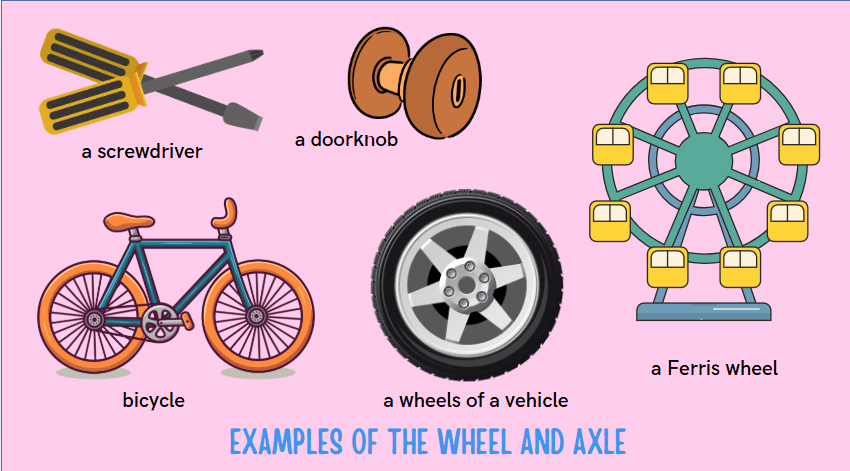6 Simple Machines: Explanations, Examples
A simple machine is a device that makes work easier by changing the direction or magnitude of the force required to move an object. They are called "simple" because they have few or no moving parts. Simple machines can help us lift heavy objects, move them, or break things into smaller pieces using less force. These machines are the building blocks for more complex machines & have been used since ancient times.
Lever
A lever is a rigid bar that pivots around a fixed point called the fulcrum. It is used to lift or move heavy objects. The effort is applied on one side of the lever, & the load is lifted on the other side.
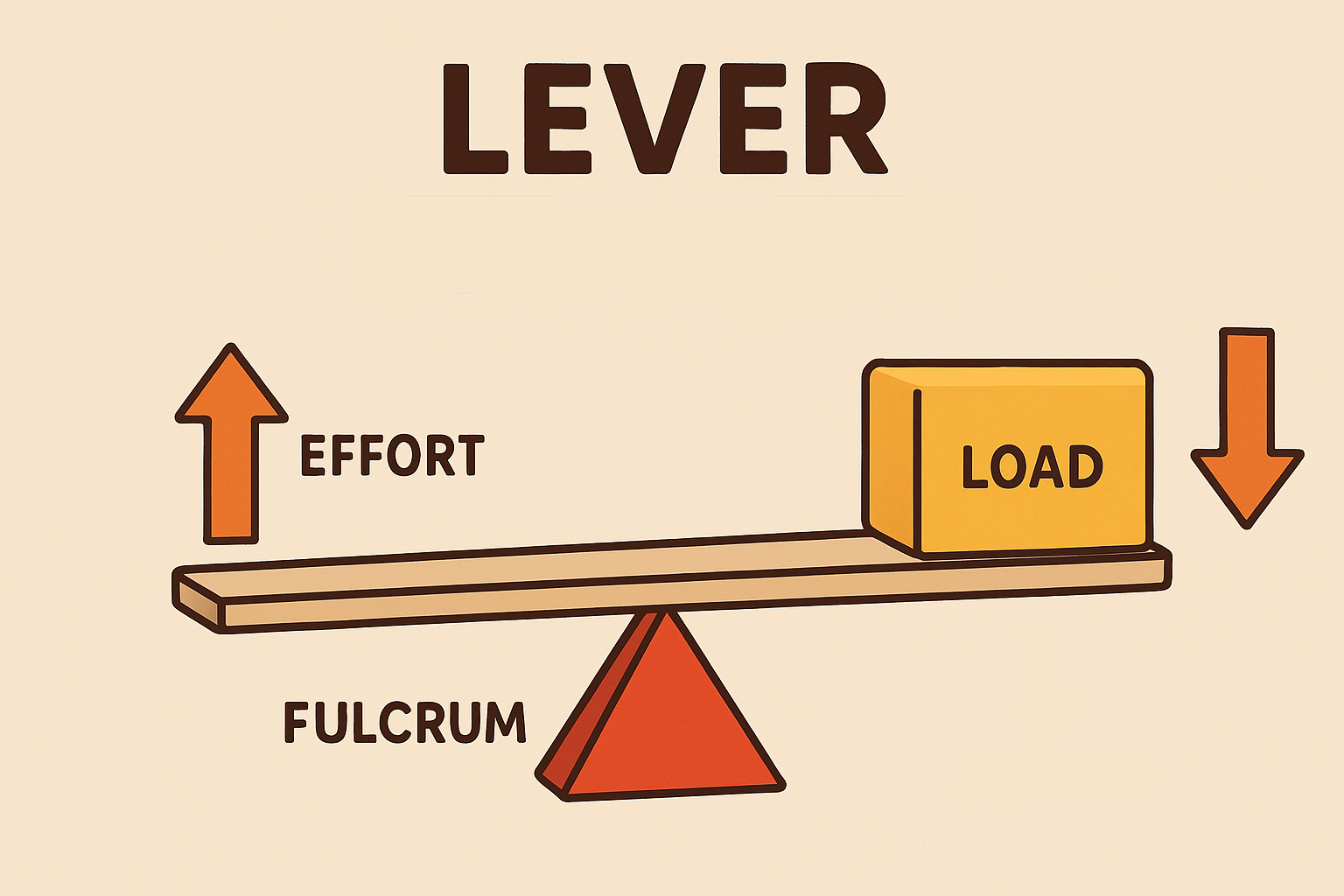
MA = Distance from Fulcrum to Effort/Distance from Fulcrum to Load
Real-life example: A seesaw at the playground is a good example of a first-class lever where the fulcrum is in the center and the effort & load are on opposite sides.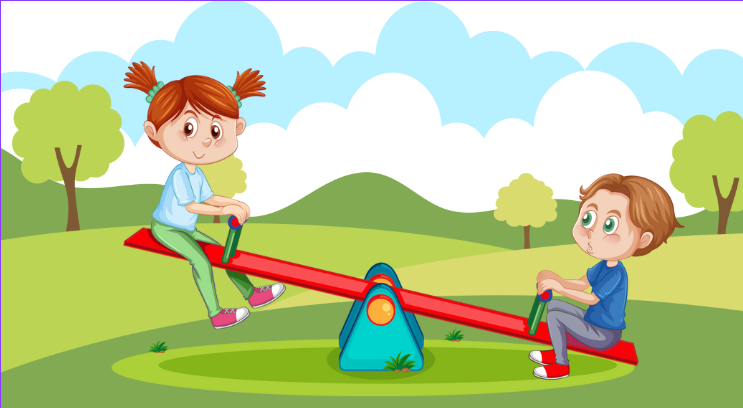
Types of Levers
Depending on the position of the fulcrum, levers are classified into three types:
|
Type |
Fulcrum Position |
Effort Position |
Load Position |
|
First Class |
Between the effort and load |
Effort on one side, load on the other side |
Scissors, Seesaw, Crowbar |
|
Second Class |
Between effort & fulcrum |
Load in the middle |
Wheelbarrow, Nutcracker, Bottle opener |
|
Third Class |
Between load & fulcrum |
Effort in the middle |
Fishing rod, Tweezers, Human arm |
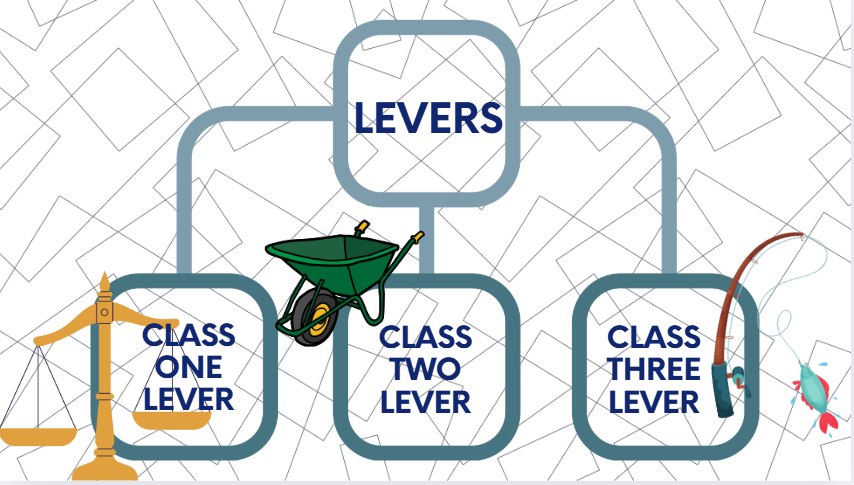
Pulley
A pulley is a wheel with a rope or chain running along its groove. Pulleys are used to lift heavy loads by changing the direction of the force. When used in combination, pulleys can also provide mechanical advantage, making it easier to lift heavy objects.
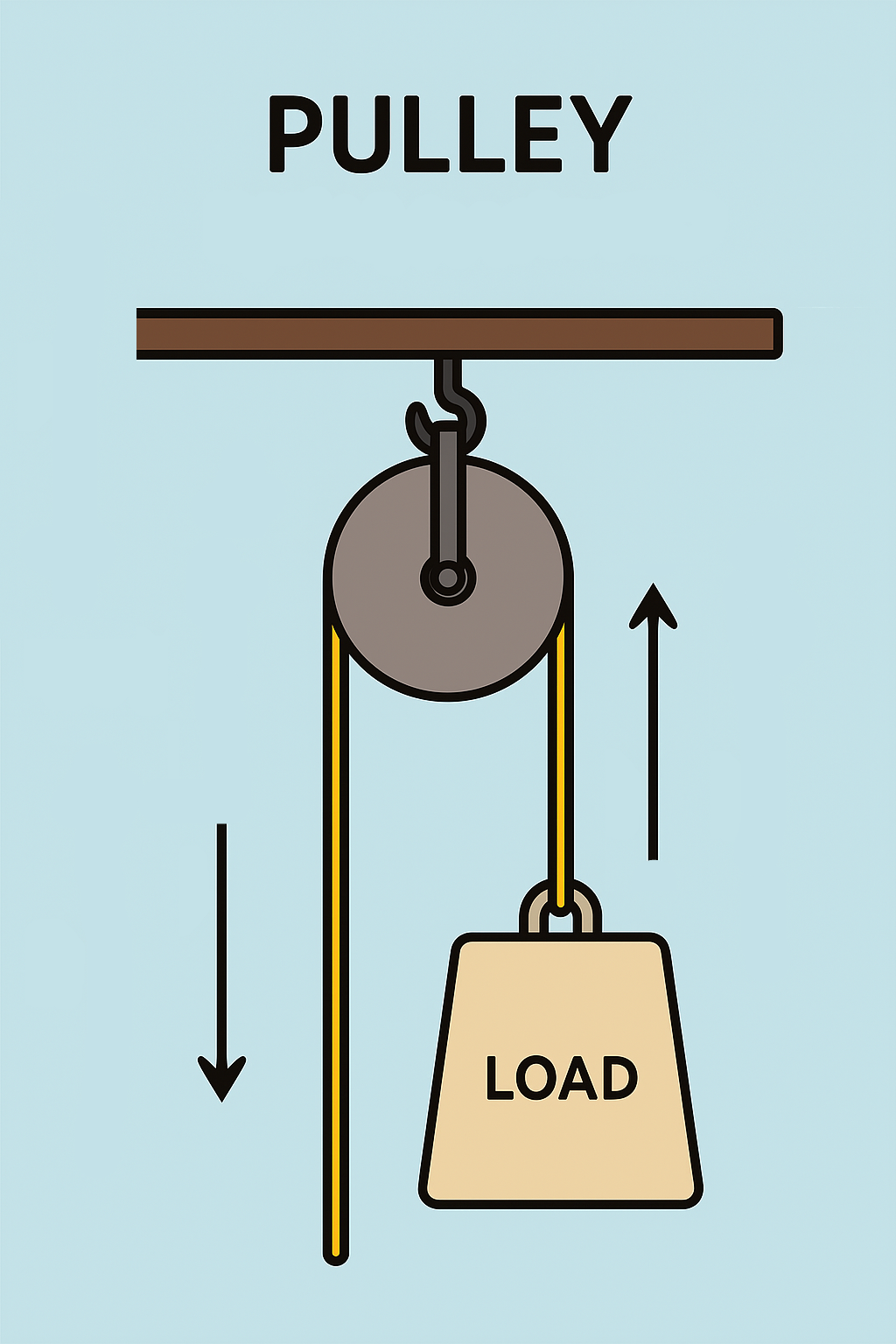
MA = Number of rope segments pulling up on an object
Types of Pulleys:
|
Type |
Description |
Example |
|
Fixed Pulley |
The wheel is static, it merely reroutes the vector of force. |
Flagpole, Window blinds |
|
Movable Pulley |
The pulley travels with the load to give mechanical advantage. |
Crane, Construction pulley system |
|
Compound Pulley |
A set of fixed & movable pulleys, giving you more mechanical advantage. |
Lift, Gym equipment pulley system |
Real-life example: Crane uses a system of pulleys to lift heavy construction materials.
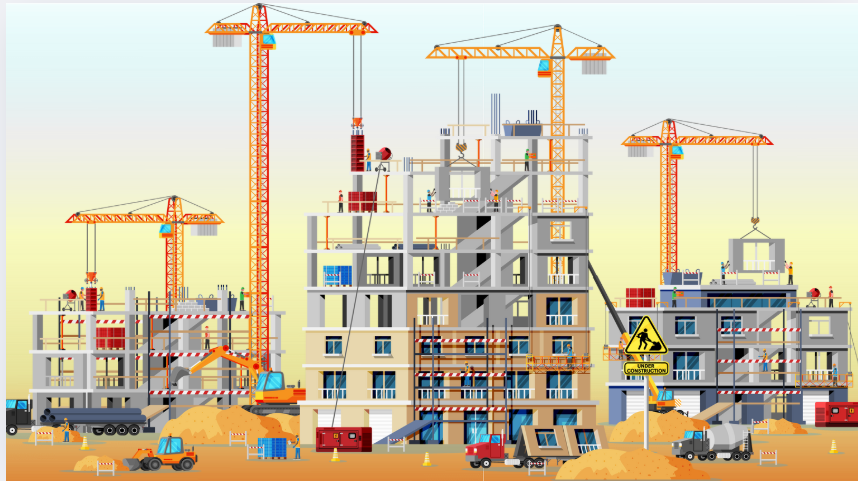
Wheel and Axle
-
The wheel & axle are two circular objects attached to each other, so when the wheel turns, the axle moves with it. This simple machine simply reduces the friction, which makes the movement of a load often easier to move or carry without being able to raise it.
-
This simple machine is composed of a wheel along with a central rod (the axle).
-
This system consists of an axle running through the center of the wheel such that when the axle is turned, the wheel turns with it.
-
Some common examples of the wheel and axle include screwdrivers, wheels, door knobs, ferris wheels, & many more.
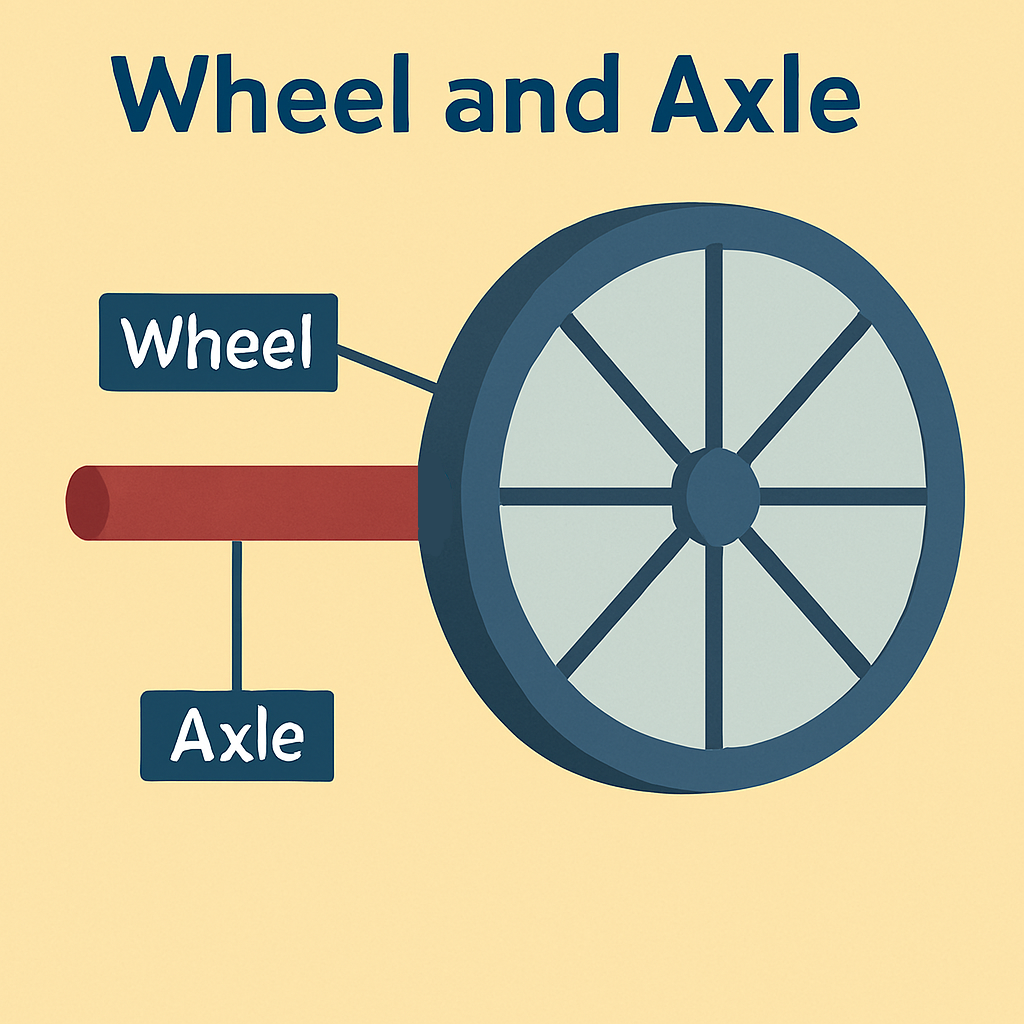
MA = Radius of Wheel/ Radius of Axle
Real-life example: A wheel and axle example is a bicycle. The pedals (the wheel) spin the axle (the wheel’s center), propelling the bike forward.
Inclined Plane
-
An inclined plane is a flat or level surface that has been tilted at an angle to the horizontal. Sliding the load up the ramp makes lifting the same load easier because less effort is required than if the same load was simply lifted up without the ramp.
-
An inclined plane is a flat surface that remains inclined connecting the horizontal surface.
-
One end is higher than the other end.
-
Inclined plane is a simple machine that is used to move an object from lowest level to a higher level with a lesser effort than going straight up. But this requires the object to travel a greater distance.
-
Its slope is determined by the angle it makes (θ) with the horizontal surface. As the angle increases so does the slope of the inclined plane.
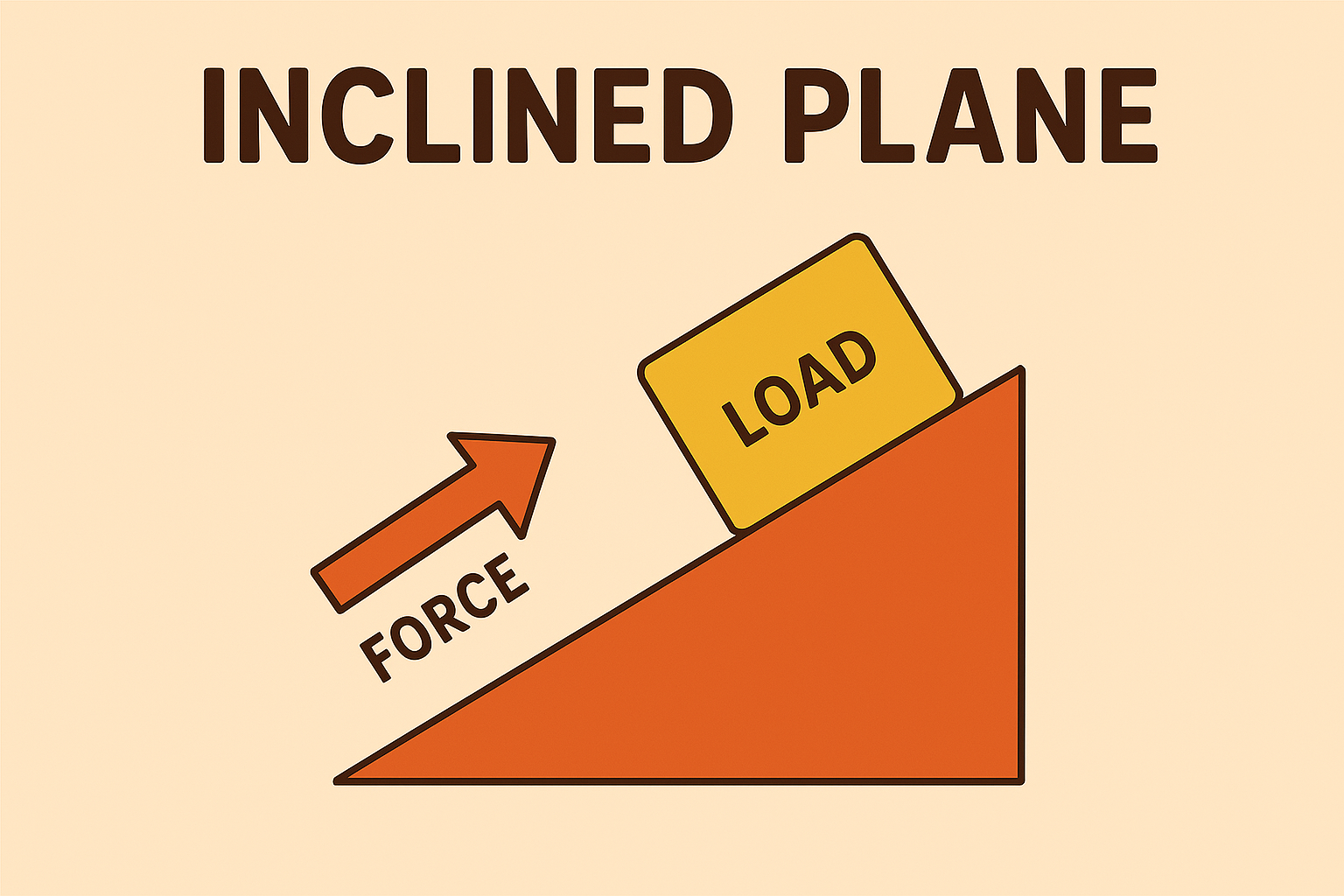
MA = Length of Incline/Height of Incline
Real-life example: An inclined plane is found in a ramp used to bring heavy furniture into a house. The greater the length of the ramp, the smaller the amount of effort required to move the object.
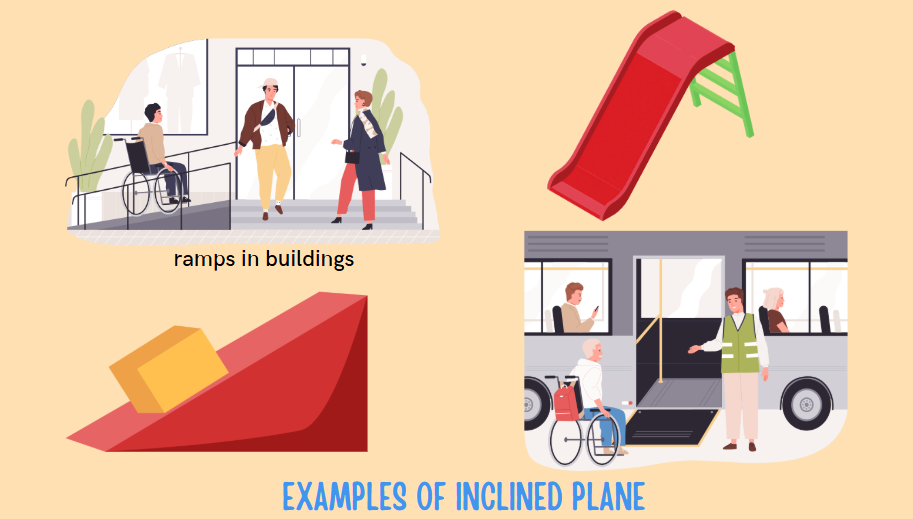
Wedge
-
A wedge is one of the tools that is shaped like a triangle which cuts or splits a material. It turns a compressive force at its blunt end into a shearing force at its sharp edge. A wedge is in fact a moving inclined plane.
-
The pointed end of this simple machine is used to rip apart or slice through something.
-
Some wedge examples include an axe, a doorstop, a knife, a cheese slicer etc.
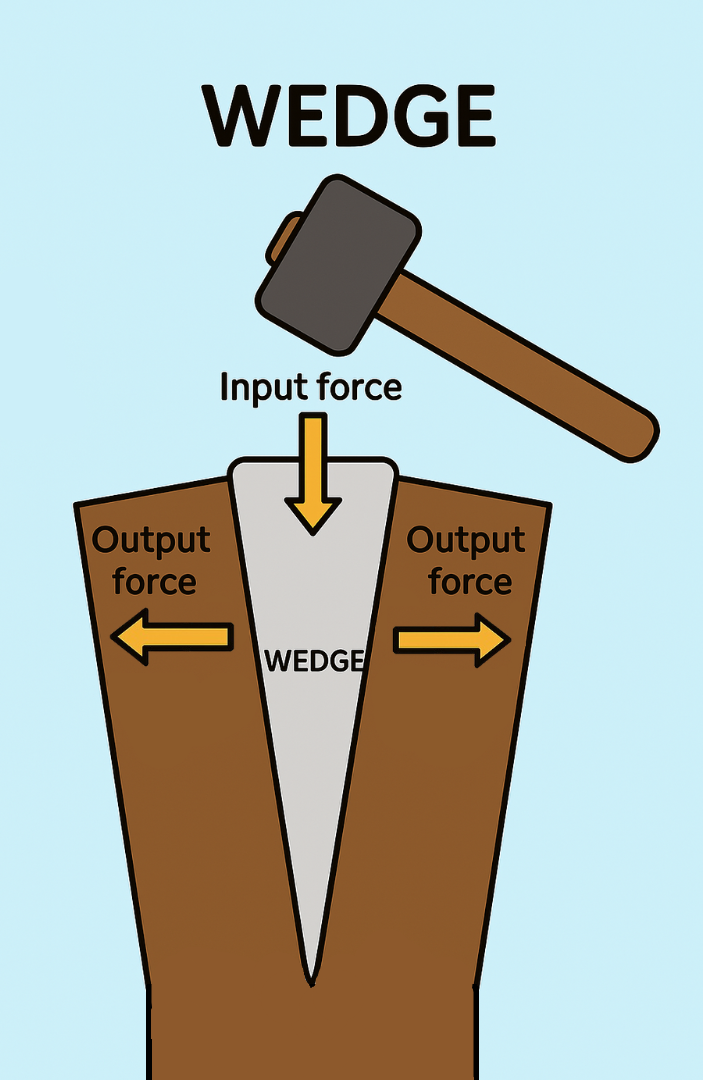
MA = Length of Wedge/Width of Wedge
Real-life example: A knife, an axe are examples of wedge.
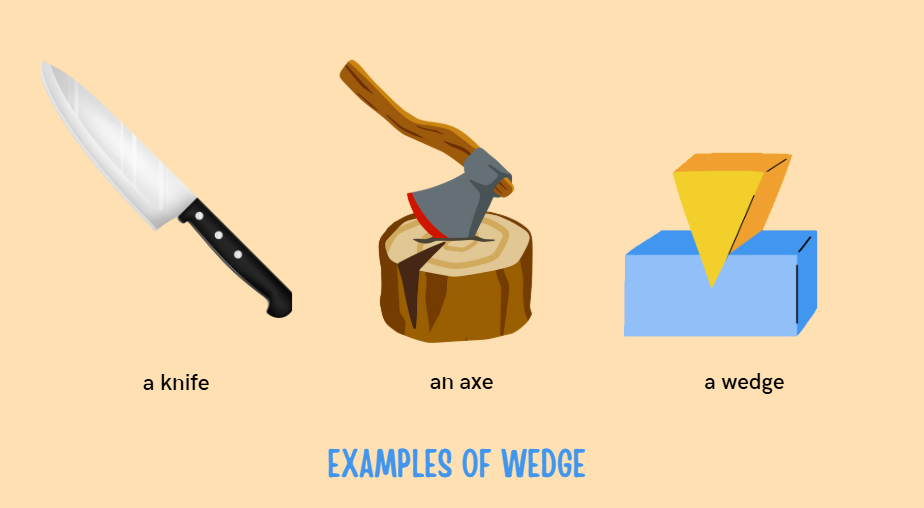
Screw
-
It is basically an inclined plane wrapped around a center core. Used for fastening or lifting things. Screws function by rotating it which causes a pushing or pulling force.
-
Some examples of screws are the screw end of a light bulb, a screw jack, the lid of a bottle or jar, a vise, & bolt.
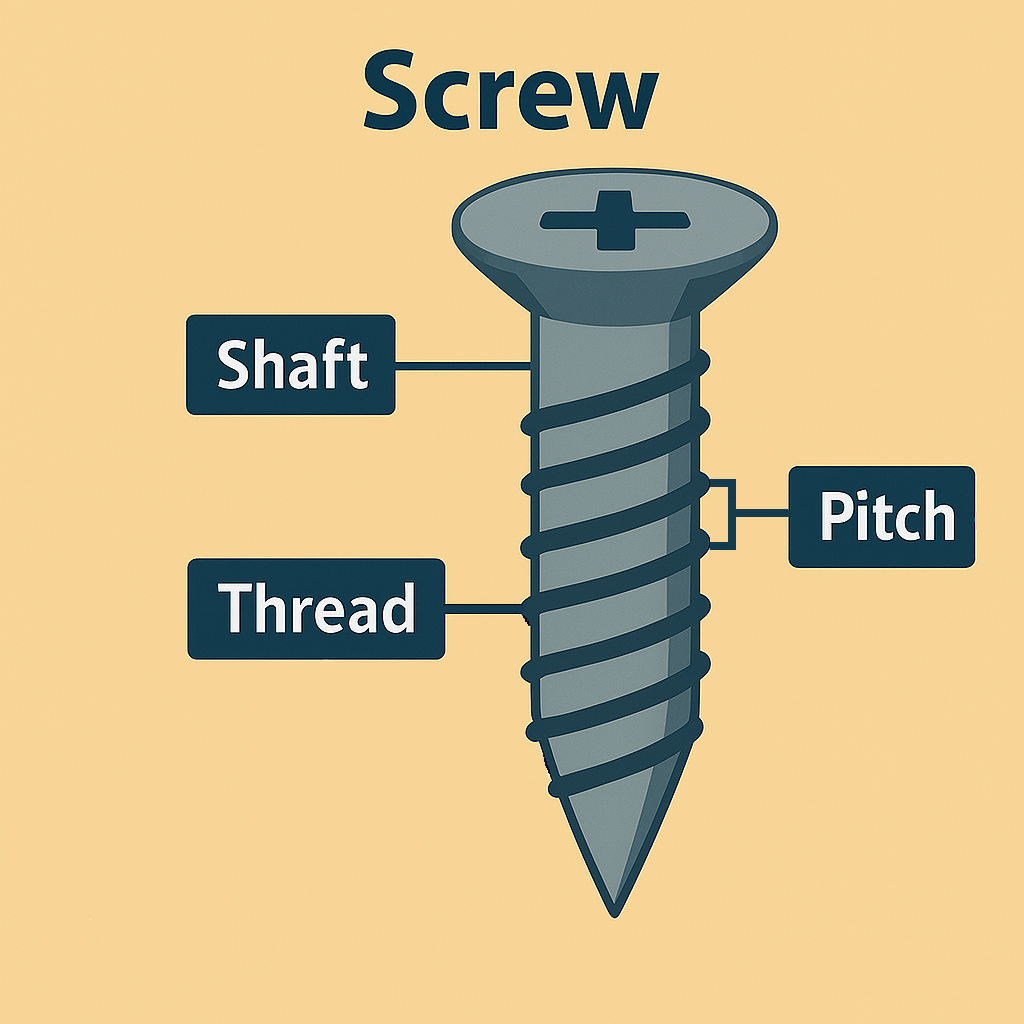
MA = Length of Spiral/Pitch of the Thread
Real-life example: A jar lid is an example of a screw. This screw also has threads on it, and when you twist the lid, it helps the jar close tightly.
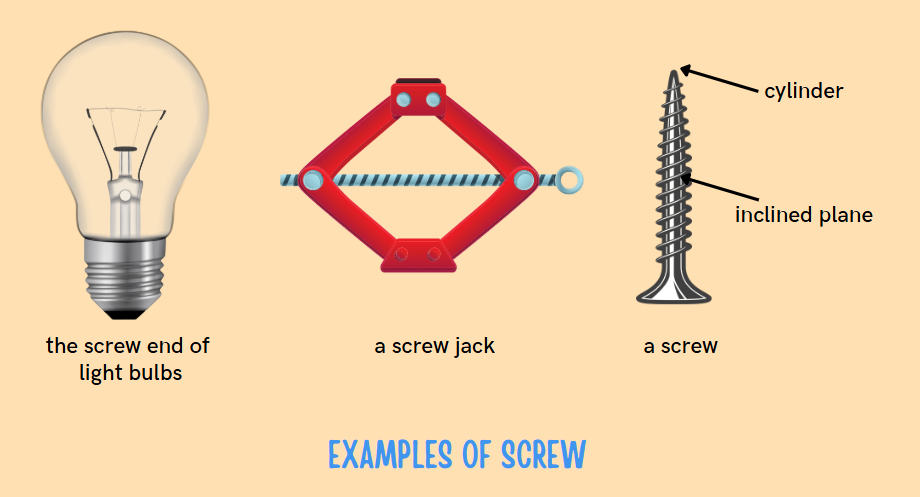
Mechanical Advantage Formula Chart:
| Simple Machine | Formula for Mechanical Advantage |
| Lever | MA = Distance from Fulcrum to Effort/Distance from Fulcrum to Load |
| Pulley | MA = Number of rope segments pulling up on an object |
| Wheel and Axle | MA = Radius of Wheel/Radius of Axle |
| Inclined Plane | MA = Length of Incline/Height of Incline |
| Wedge | MA = Length of Wedge/Width of Wedge |
| Screw | MA = Length of Spiral/Pitch of the Thread |
Fun Facts:
-
Simple machines are considered to be the oldest ones & the first one is Lever. It has its roots as far back as 2000 BC.
-
Over 5,000 years ago, the Wheel and Axle were invented reeling in one of the most crucial inventions in human history.
-
Pulleys are used not only to lift objects but is actually part of the design of simple machines such as elevators.
-
The Inclined Plane is often called the "mother of all machines" because it can be combined with other simple machines to create more complex machines.
Things you have learned!
- Understand how simple machines, like levers and screws, make tasks easier by reducing effort.
- Explore everyday examples of simple machines, such as seesaws, bicycles, and cranes.
- Learn how the mechanical advantage formula helps calculate the force needed to move objects.
CBSE Schools In Popular Cities
- CBSE Schools in Bangalore
- CBSE Schools in Mumbai
- CBSE Schools in Pune
- CBSE Schools in Hyderabad
- CBSE Schools in Chennai
- CBSE Schools in Gurgaon
- CBSE Schools in Kolkata
- CBSE Schools in Indore
- CBSE Schools in Sonipat
- CBSE Schools in Delhi
- CBSE Schools in Rohtak
- CBSE Schools in Bhopal
- CBSE Schools in Aurangabad
- CBSE Schools in Jabalpur
- CBSE Schools in Jaipur
- CBSE Schools in Jodhpur
- CBSE Schools in Nagpur
- CBSE Schools in Ahmednagar
- CBSE School In Tumkur



